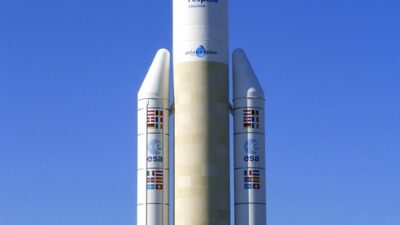The dawn of space tourism is upon us, as private companies and visionary entrepreneurs venture beyond our planet’s atmosphere in a quest not just for adventure, but for innovation. With several milestones already achieved, such as suborbital flights and planned orbital experiences, the burgeoning industry is poised to revolutionize aerospace technology in profound ways. This article explores the multifaceted impact of space tourism on the future of aerospace technology, including advancements in engineering, materials science, safety protocols, and economic implications.
Engineering Innovations
As companies like Blue Origin, SpaceX, and Virgin Galactic race to make space accessible to non-professional astronauts, engineering innovations have become a central focus. The competitive nature of the industry has spurred rapid advancements in spacecraft design and propulsion systems. For instance, reusable rocket technologies are being developed to lower the cost of access to space. The engineering principles employed in developing spacecraft for tourism reinforce and improve techniques that will also benefit commercial and scientific space missions.
Additionally, the demand for more efficient spacecraft has led to the exploration of hybrid and electric propulsion systems. These technologies, initially considered for terrestrial applications, could reduce our dependence on fossil fuels and minimize the ecological footprint of space missions. This cross-pollination of ideas highlights how space tourism can serve as a catalyst for broader aerospace innovation.
Materials Science Developments
The challenges associated with space travel necessitate significant advancements in materials science. To ensure the safety and comfort of space tourists, researchers are focused on developing lightweight, ultra-strong materials that can withstand the harsh conditions of space travel. Innovations such as carbon nanotubes and advanced composites are on the frontier of research, and success in these areas could enhance the durability and efficiency of all spacecraft, including those used for military and exploratory missions.
Moreover, improvements in thermal protection systems will be essential for re-entry and landing phases, which are particularly demanding on materials. These innovations will not only improve space tourism vehicles but will also translate into better technologies for existing aerospace applications, such as commercial airliners and drones.
Enhanced Safety Protocols
As space tourism becomes more mainstream, ensuring the safety of non-professional astronauts becomes paramount. This requirement has initiated the development of rigorous safety protocols and redundant systems, which will be essential for passenger confidence. Spacecraft must incorporate advanced safety technologies, such as automated flight systems and real-time health monitoring for passengers.
The aerospace industry is likely to benefit from these initiatives as modular safety systems and automated responses to in-flight emergencies become standardized. Furthermore, the focus on safety will drive innovation in training programs, enhancing the skill sets of both crew and tour participants, potentially spilling over into other fields such as commercial aviation and resource transport.
Economic Implications
The rise of space tourism has significant economic implications for the aerospace sector and beyond. The influx of private investment is driving a new wave of startups, from hospitality-focused companies aiming to create space hotels to those specializing in space-related training programs. Such diversification brings new skills and job opportunities to an industry that historically has been dominated by governmental entities.
Moreover, the increased commercialization of space opens up potential revenue streams that can support research and development in other aerospace domains. For example, revenues generated from space tourism could fund missions with scientific purposes, such as planetary exploration or space habitats, creating a mutually beneficial relationship between commercial endeavors and scientific pursuits.
Cultural and Societal Impact
Perhaps one of the most profound impacts of space tourism is its potential to reshape humanity’s relationship with space. Experiencing the overview effect—the cognitive shift in awareness reported by astronauts upon seeing Earth from space—can inspire a new generation to care about our planet and promote technologies for sustainability and conservation.
As space travel becomes a reality for more individuals, the cultural significance of space exploration will deepen. This societal shift may encourage governments to prioritize aerospace innovation, reshaping policies that govern space exploration and utilization.
Conclusion
The emergence of space tourism is not merely a passing trend but a significant marker in the evolution of aerospace technology. Its influence spans engineering, materials science, safety protocols, and economic restructuring. By pushing the boundaries of what is possible, space tourism promises to stimulate advancements that will benefit both commercial and governmental aerospace initiatives.
As we challenge the boundaries of Earth’s atmosphere, it is essential to harness these innovations responsibly to ensure they lead to a future marked by exploration, sustainability, and a deeper understanding of our place in the universe. The sky is no longer the limit, and as we venture into space, the horizons of aerospace technology are expanding like never before.

